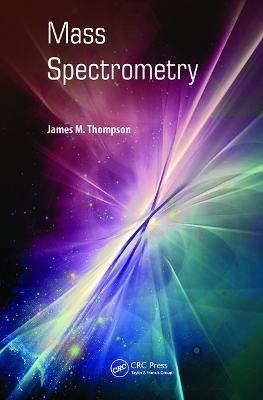
Mass Spectrometry
Pan Stanford Publishing Pte Ltd (Verlag)
978-981-4774-77-2 (ISBN)
It is estimated that there are about 10 million organic chemicals known, and about 100,000 new organic compounds are produced each year. Some of these new chemicals are made in the laboratory and some are isolated from natural products. The structural determination of these compounds is the job of the chemist. There are several instrumental techniques used to determine the structures of organic compounds. These include NMR, UV/visible, infrared spectroscopy, mass spectrometry, and X-ray crystallography. Of all the instrumental techniques listed, infrared spectroscopy and mass spectrometry are the two most popular techniques, mainly because they tend to be less expensive and give us the most structural information.
This book is an introductory text designed to acquaint undergraduate and graduate students with the basic theory and interpretative techniques of mass spectrometry. Much of the material in this text has been used over a period of several years for teaching courses in materials characterization and chemical analysis. It presents the mass spectra of the major classes of organic compounds and correlates the fragmentation pattern of each spectrum with the structural features of the compound it represents. This has been done for hydrocarbons, organic acids, ketones, aldehydes, esters, anhydrides, phenols, amines, and amides. The text discusses the origin of the fragments, techniques, innovations, and applications in mass spectrometry. It is interspersed with many illustrations, examples, an adequate but not overwhelming bibliography, and problems for students. It will serve as a lecture text for a one-semester course in mass spectrometry or can be used to teach the mass spectra portion of a broader course in material characterization and chemical analysis.
James M. Thompson is emeritus professor at the Department of Chemistry and former chair of the Department of Natural and Physical Sciences at Alabama A&M University. He taught organic chemistry and instrumental methods for many years at the university. He received his PhD in 1975 from the University of Delaware under the supervision of Dr. Richard F. Heck (recipient of the Nobel Prize in Chemistry in 2010). Prof. Thompson’s research interests are in organic chemistry, use of mass spectra, infrared spectra, C-13 and proton nuclear magnetic resonance (NMR) spectra, and structural determination of organic compounds. He performed research for NASA in the area of thermal gravimetric analysis for about 15 years and is a recipient of more than 50 awards and recognitions.
Some Fundamentals of Mass Spectrometry. The Analysis of Mass Spectra. Problems in Mass Spectrometry. Appendix
| Erscheinungsdatum | 17.03.2018 |
|---|---|
| Zusatzinfo | 22 Tables, black and white; 229 Line drawings, black and white; 8 Halftones, black and white; 237 Illustrations, black and white |
| Verlagsort | Singapore |
| Sprache | englisch |
| Maße | 152 x 229 mm |
| Gewicht | 408 g |
| Themenwelt | Naturwissenschaften ► Chemie ► Analytische Chemie |
| Technik ► Maschinenbau | |
| ISBN-10 | 981-4774-77-4 / 9814774774 |
| ISBN-13 | 978-981-4774-77-2 / 9789814774772 |
| Zustand | Neuware |
| Haben Sie eine Frage zum Produkt? |
aus dem Bereich


